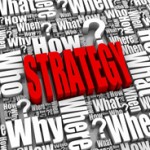In an earlier post on this blog, I addressed the question “what is a supply chain?” As the post was intended to provide the answer in a nutshell, I simply explained that the supply chain starts with some raw materials and ends with a finished product in the hands of a customer or consumer.

I also explained that there is really a lot more to it than that. Supply chains can become incredibly complex and in reality even the simplest flow of materials requires supply chain management.
Supply Chain Management: An Illustrative Scenario
Without somebody to take care of the mechanics of a supply chain, it would probably break down in fairly short order. To illustrate this, let’s take a very simple scenario.
Assume you are a local baker, supplying but one type of bread to households in your town. In order to produce the bread, you need raw materials. Now let’s look at just one of those materials—flour.
By the time you receive the flour at your bakery, it has already passed through the hands of at least one other party, but probably two. The cereal crop must be grown by a farmer, in order to harvest the grain from which your flour is made.
Unless the farmer is also a miller, he or she will sell the grain to a milling company, who will turn it into flour. You buy your flour directly from the milling company. This is your inbound supply chain.
You also have an outbound supply chain, which is the channel by which your bread, once baked, is provided to your household consumers–your customers.
As you supply your customers directly, your outbound supply chain is fairly simple. You use your own van to deliver the loaves soon after you’ve baked a big enough batch. On the other hand, your inbound supply chain is quite complex, since you need other ingredients aside from flour.
Regardless of complexity, none of these events in the flow of materials or products would take place without supply chain management.
Even the parts of the supply chain which are not in your hands, such as the shipment of grain to the milling company, must be managed by somebody. At the same time, you are managing even those aspects outside of your direct control for example, when you decide how much flour to buy and when to buy it. That’s the essence of supply chain management.
Supply Chains Don’t Manage Themselves
Supply chain management is the planning and organisation of all the events which must take place in order to move materials, information, and money, up and down the supply chain.
If you are that local baker, even providing just one type of bread to consumers in your town requires that you manage the parts of the chain that you operate directly, such as the bread production process and the transportation to your customer’s door, as well as those parts operated by other organisations.
This means for example that you must decide who to buy your flour from, when to order it, how long you are prepared to wait for delivery or whether you will collect it yourself, and so on.
Are You Ready to Learn More?
 Supply chains don’t just happen, hence the need for supply chain management. In reality of course, supply chain management is complex and requires a lot of coordination and collaboration within a company and with its partners in the supply chain, including customers and suppliers. It’s also typically aided by elaborate software platforms, some which are purpose-designed SCM solutions.
Supply chains don’t just happen, hence the need for supply chain management. In reality of course, supply chain management is complex and requires a lot of coordination and collaboration within a company and with its partners in the supply chain, including customers and suppliers. It’s also typically aided by elaborate software platforms, some which are purpose-designed SCM solutions.
My book “What is Supply Chain Management?” explains a great deal more about the topic and all its intricacies. If you’d like to understand supply chain management, including some of the secrets you won’t learn through academic channels, download a copy of “What is Supply Chain Management?” This eBook download is also accompanied by a whole lot of bonus content that’s sure to add to your supply chain knowledge.

